Volcano Live
volcanolive.com
Campi Flegrei Volcano | John Seach

(Phlegrean Fields)
Campania, Italy
40.82 N, 14.13 E,
summit elevation 458 m
caldera
Campi Flegrei caldera lies 9 km west of Naples. It is a low-lying volcano completely surrounded by populated areas in the town of Pozzuoli. Houses are built right to the crater rim.
Campi Flegrei is a large volcanic caldera located in the Gulf of Naples, southern Italy. It is one of the most active volcanic regions in the world, and it has a long history of eruptions dating back to ancient times. The caldera is a complex system of vents and craters, with activity that ranges from explosive eruptions to fumarolic activity.
Scientists consider it to be a "restless" volcano. It has shown signs of low-level activity such as ground deformation, changes in gas emissions, and minor earthquake swarms. This means that Campi Flegrei has the potential to erupt again in the future and could pose a significant hazard to the population living nearby.
Campi Flegrei is one of the most studied volcanoes in the world, due to its historical significance and potential threat to the population. Scientists use various monitoring techniques such as GPS, InSAR, gas monitoring, and thermal imaging to understand the volcano's behavior and to predict potential hazards.
Campi flegrei Campi Flegrei a restless caldera, with periods of unrest in 1969–1972, and 1982–1984. Current activity at the volcano consists of solfataras in the crater. The caldera and its surroundings are inhabited by more than 1.5 million people.
Campi Flegrei photos by John Seach
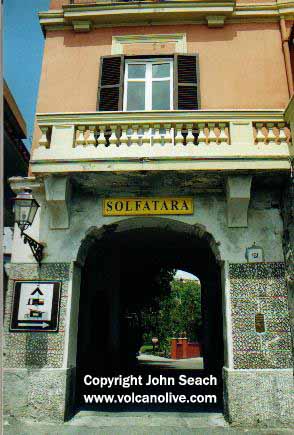
Volcano is entered through an arch - John Seach
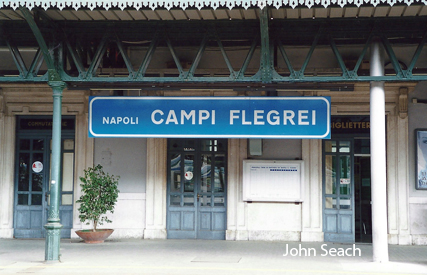
Campi Flegrei railway station
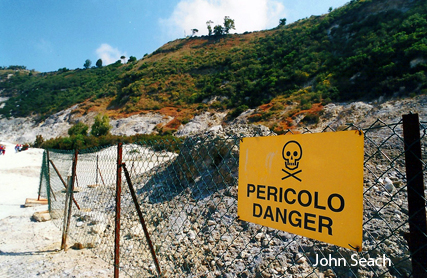
Campi Flegrei crater
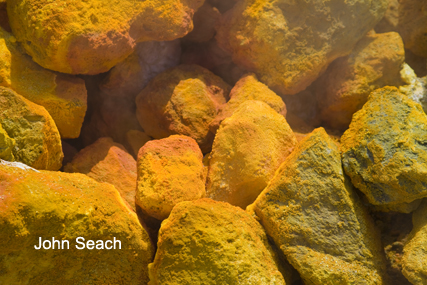
Solfatara, Campi Flegrei, Italy
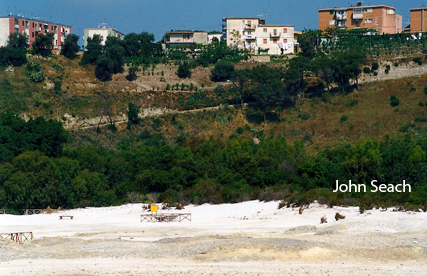
Houses built on the crater rim at Campi Flegrei
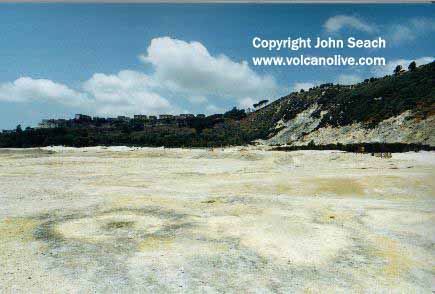
Solfatara Crater, Campi Flegrei - John Seach
Caldera Formation
The main structure of the Phlegraean area is a large (nearly 12 km diameter)
caldera formed about 35,000 years ago by collapse after the eruption of the
Campanian Ignimbrite. Half of the caldera is submerged beneath the sea in the Gulf of Pozzuoli. Volume of the caldera is estimated to be 80 cubic km. The second Phlegraean period consisted of eruption of tuffs from several vents 14,000 to 10,500 years ago. The magma-equivalent volume for this phase is estimated at 10.5 cubic km.
1538 Monte Nuovo Eruption
Ground uplift in 1502 was observed by residents of Pozzuoli. Moderate seismic activity was recorded two days before the eruption. On 29th September 1538 the eruption began in Campi Flegrei forming a new volcano, Monte Nuovo. The first two days of the eruption consisted of explosive activity, with small pyroclastic flows, and growth of a cone around the vent. The eruption ended on 6th October with a violent explosion, which killed twenty-four people, who were climbing the vent.
Older Eruptions
Two violent eruptions occurred at the volcano 12,000 and 35,000 years ago. Campi Flegrei caldera shows "bradyseism" which is the alternating uplift and sinking of the ground within the caldera.
Further reading
Orsi, G., Di Vito, M.A. and Isaia, R., 2004. Volcanic hazard assessment at the restless Campi Flegrei caldera. Bulletin of Volcanology, 66(6), pp.514-530.
Di Vito, M.A., Isaia, R., Orsi, G., Southon, J.D., De Vita, S., d'Antonio, M., Pappalardo, L. and Piochi, M., 1999. Volcanism and deformation since 12,000 years at the Campi Flegrei caldera (Italy). Journal of Volcanology and Geothermal Research, 91(2-4), pp.221-246.
Campi Flegrei Volcano Eruptions
1538, 1198.